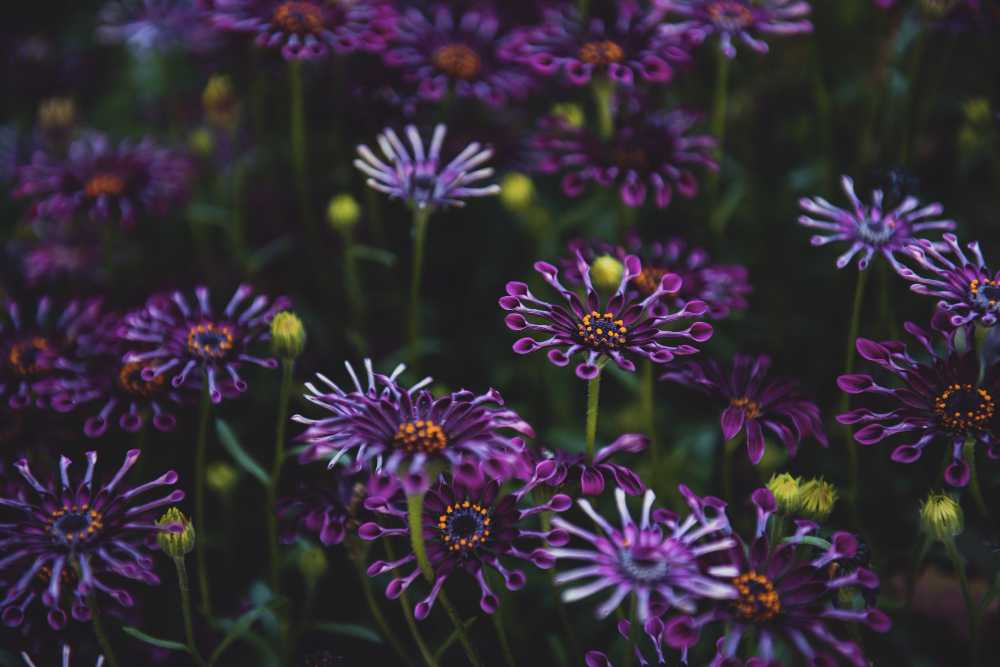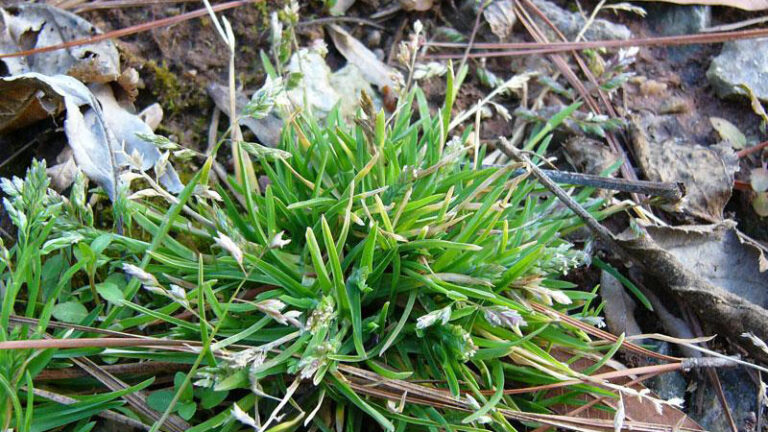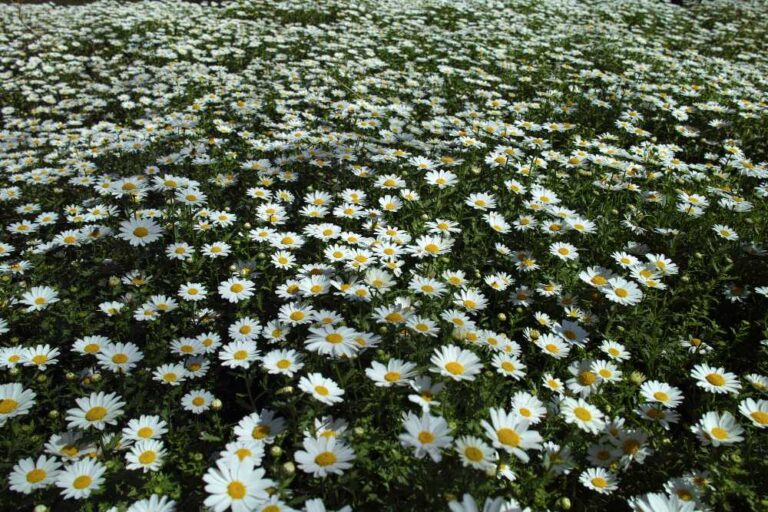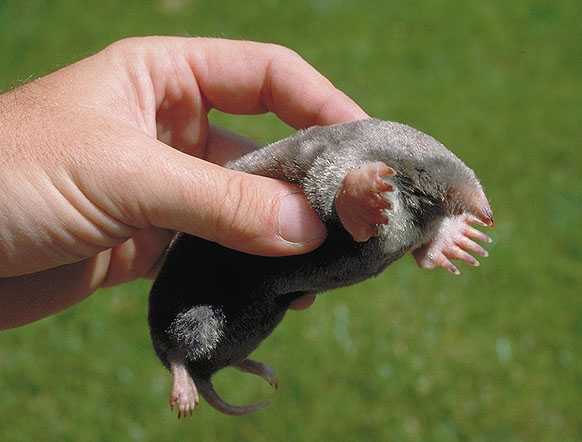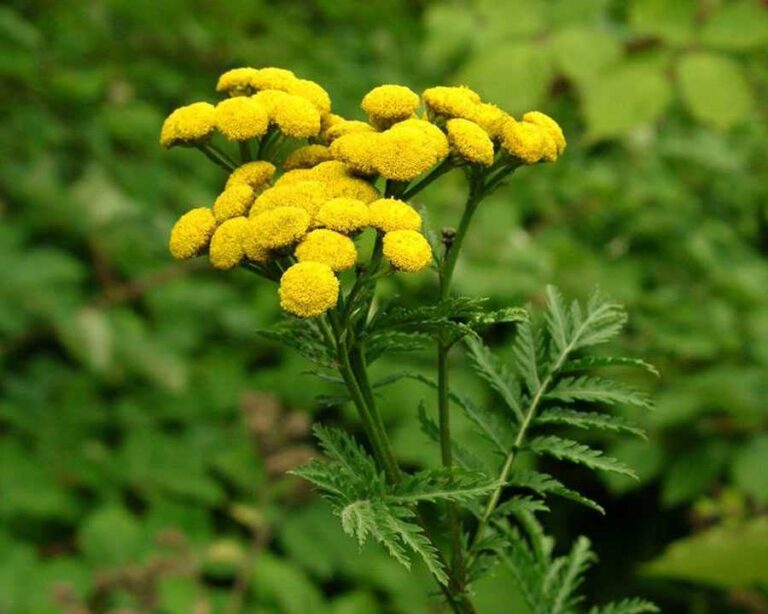17 Purple Flower Weeds in Grass
Weeds are a common sight in gardens, lawns, and natural landscapes, often competing with desired plants for resources and spoiling the aesthetic appeal of outdoor spaces. Among the diverse array of weeds, those with purple flowers are particularly striking, adding a burst of color to their surroundings. Despite the visual appeal of these purple flower weeds in grass, many of them are invasive and can ruin the picturesque landscape.
In this post, we’ll look at 17 such weeds that might be lurking in your yard, and provide effective ways to identify, eliminate, and prevent their growth:
1. Bull Thistle (Cirsium vulgare)
Identification: Bull Thistle (Cirsium vulgare) is a notorious purple-flowered weed commonly found in grasslands and pastures. Its imposing stature and vibrant purple blossoms make it visually striking, but it can quickly take over lawns and disrupt grazing areas. Bull thistle is armed with sharp spines, making it a challenge to handle.
Removal and Prevention: To tackle this aggressive weed, wear gloves to protect yourself from its spines and remove the plant with its deep taproot, ensuring complete extraction. Prevent Bull Thistle’s return by applying mulch to suppress its growth and maintain a weed-free environment. Regular monitoring and swift action are essential to keep it at bay.
2. Purple Deadnettle (Lamium purpureum)
Identification: Purple Deadnettle is one of the common purple flower weeds in grass areas. Purple Deadnettle is easily recognized by its heart-shaped leaves with a purple tint and clusters of small, tubular purple flowers. It often grows in disturbed areas, such as gardens, roadsides, and lawns.
Removal and Prevention: To eliminate this weed, hand-pull it when it appears in your garden. For prevention, consider using a pre-emergent herbicide in early spring to inhibit its germination and growth. Maintain a healthy lawn, as this weed prefers compacted or nutrient-poor soils. Proper mulching can also help suppress its return. Stay vigilant to maintain a weed-free garden.
3. Henbit (Lamium amplexicaule)
Identification: Similar in appearance to purple deadnettle, Henbit is another purple flower weeds in grass. Henbit is a common garden weed identifiable by its square stem and heart-shaped leaves with a purple tinge. This invasive annual plant produces clusters of tubular purple flowers and can quickly spread in gardens and lawns. It thrives in moist, fertile soil and can be found in gardens, fields, and lawns.
Removal and Prevention: To eradicate Henbit, hand-pull it before it flowers, ensuring you remove the entire plant. Mulching can also help prevent its return. Maintaining a healthy lawn with proper fertilization and dense grass growth will discourage Henbit infestations, making it a less formidable opponent in your garden battles.
4. Ground Ivy (Glechoma hederacea)
Identification: Ground Ivy, also known as Creeping Charlie, is a low-growing weed with scalloped leaves and funnel-shaped purple flowers. This invasive plant can quickly spread through your lawn and garden, choking out desirable plants.
Removal and Prevention: To combat these purple weeds in yard, hand-pull them, making sure you remove their roots to prevent regrowth. Maintaining a healthy lawn with proper fertilization and dense grass growth can help deter its return. Be vigilant in identifying and eliminating this persistent weed to keep your garden thriving and free from its invasive clutches.
5. Red Clover (Trifolium pratense)
Identification: Red Clover is recognizable by its compound leaves and round, reddish-purple flower head, which attracts pollinators. Red clover weed is often intentionally sown as a cover crop in gardens and agricultural fields. While it has some benefits, it can become invasive if left unchecked.
Removal and Prevention: To control Red Clover, hand-pull or mow it before it goes to seed. This weed thrives in nitrogen-rich soil, so improving soil fertility can help deter its growth. Regular monitoring and early intervention are essential to prevent it from taking over your garden.
6. Purple Loosestrife (Lythrum salicaria)
Identification: As one of the most common purple flower weeds in grass, Purple Loosestrife stands out for its tall spikes of magenta-purple flowers, which cluster at the top of its stems. It is a highly invasive weed found in lawns, wetlands, and along water bodies. Its purple spikes of flowers may seem beautiful, but they pose a serious threat to native ecosystems.
Removal and Prevention: To remove, dig out the entire root system, and dispose of it properly. Avoid planting it intentionally, as it can become invasive and harm native ecosystems. Biological control using beetles and regular monitoring are common strategies to manage its spread.
7. Wild Violet (Viola sororia)
Identification: Wild Violet, scientifically known as Viola sororia, is a charming perennial weed with heart-shaped leaves and dainty purple or blue-purple flowers. While wild violets may appear charming with their purple blooms, they can quickly take over lawns and gardens if not managed.
Removal and Prevention: To tackle Wild Violets, hand-pull them before they set seed and maintain a healthy lawn to deter their growth. Stay vigilant, and with consistent effort, you can keep these purple weeds in yard at bay and ensure your garden remains a haven of beauty and order.
8. Canada Thistle (Cirsium arvense)
Identification: Canada Thistle is a persistent weed with lance-shaped leaves and spiny, pink to purple flower heads. It grows 2-4 feet tall. Its purple flowers may appear attractive, but this noxious invader competes aggressively with crops and native plants for resources.
Removal and Prevention: Effective methods to control Canada Thistle include regular mowing before flowering and targeted herbicide application. Hand-pulling is effective for small infestations, ensuring complete root removal. Maintain dense ground cover or healthy crops to outcompete Canada Thistle. Due to its tenacity, early intervention is crucial to prevent its spread and protect your lawn.
9. Thyme-leaved Speedwell (Veronica serpyllifolia)
Identification: Thyme-leaved Speedwell is a low-growing weed often found in gardens. These purple flower weeds in grass can be easily overlooked due to their tiny purple-blue flowers. Despite its unassuming appearance, addressing Thyme-leaved Speedwell promptly ensures it doesn’t become a nuisance in your garden’s landscape.
Removal and Prevention: To control it, hand-pulling is effective, but diligence is key, as it tends to spread. Maintaining a healthy garden environment and minimizing bare soil patches can help prevent its growth.
10. Violet (Viola spp.)
Identification: Violet (Viola spp.) is a charming wildflower with heart-shaped leaves and delicate purple, blue, or white blossoms. Its sweet fragrance and vibrant colors make it a favorite in gardens and natural landscapes. Violets are an essential nectar source for pollinators, contributing to biodiversity. However, their rapid self-seeding can make them weedy in lawns and gardens.
Removal and Prevention: To combat them, hand-pull or use a weeding tool to remove the entire plant. Additionally, improving lawn health can deter their growth, as violets struggle in vigorously growing turf. Regular maintenance and vigilance are necessary to keep these alluring yet invasive weeds at bay.
11. Creeping Bellflower (Campanula rapunculoides)
Identification: Creeping Bellflower (Campanula rapunculoides) is a persistent and invasive perennial weed known for its heart-shaped leaves and beautiful bell-shaped purple flowers. Despite its attractive appearance, it can rapidly spread in gardens and lawns, choking out desirable plants.
Removal and Prevention: This tenacious weed is challenging to control, often requiring a combination of manual removal and herbicidal treatment. It’s important to address Creeping Bellflower promptly to prevent it from establishing a foothold and becoming a persistent nuisance in your outdoor space. Avoid planting these purple flower weeds in grass intentionally.
12. Wild Morning Glory (Convolvulus arvensis)
Identification: Wild Morning Glory, often known as Field Bindweed, features heart-shaped leaves and funnel-shaped lavender-purple flowers. While it boasts beautiful trumpet-shaped purple or white flowers, it’s a notorious weed. Its aggressive creeping vines can quickly smother crops and gardens, making it a significant nuisance for farmers and gardeners.
Removal and Prevention: This persistent weed requires diligent management, including regular cultivation and targeted herbicide application, to prevent its takeover of agricultural fields and landscapes. Also, hand-pull and use mulch to prevent regrowth. Despite its charming appearance, its invasive nature demands careful control measures to protect desirable plants and maintain healthy ecosystems.
13. Common Mallow (Malva neglecta):
Identification: Common Mallow, scientifically known as Malva neglecta, is a ubiquitous weed with round leaves and pale purple flowers with dark stripes. Often found in lawns, gardens, and disturbed areas, it’s both an annoyance and a source of intrigue. Although considered a weed by many, common mallow has edible leaves and medicinal properties. It’s an important food source for some insects and pollinators, making it a valuable part of the ecosystem.
Removal and Prevention: The rapid spread of these purple flower weeds in grass can be managed through regular weeding and mowing, ensuring a balanced coexistence in outdoor spaces. Hand-pull or use a weeding tool to remove them and maintain good garden hygiene.
14. Purple Coneflower (Echinacea purpurea)
Identification: Purple Coneflower (Echinacea purpurea) is a stunning native plant admired for its vibrant purple-pink petals and cone-shaped center. While it adds beauty to gardens and attracts pollinators, it can sometimes become weedy due to its self-seeding nature.
Removal and Prevention: Regular deadheading prevents Purple Coneflower’s overgrowth. By removing spent flowers, you can inhibit the production of seeds and keep Purple Coneflower in check, allowing you to enjoy its charm without spreading too aggressively in your garden.
15. Redstem Filaree (Erodium cicutarium)
Identification: Redstem Filaree (Erodium cicutarium), also known as Redstem Stork’s Bill, is a common weed found in various regions across North America. This low-growing annual weed is characterized by its deeply lobed leaves and distinctive reddish stems. Its small pink to purple flowers make it visually appealing, but it can be invasive and problematic in lawns and gardens. Redstem Filaree reproduces quickly and competes with desirable plants for nutrients and space.
Removal and Prevention: To control the spread of these purple weeds in yard, regular mowing, hand pulling, or targeted herbicide application is crucial. Proactively managing Redstem Filaree can help maintain a healthy and aesthetically pleasing landscape.
16. Purple Nutsedge (Cyperus rotundus)
Identification: Purple Nutsedge (Cyperus rotundus) is a tenacious weed known for its rapidly spreading underground tubers, making it a persistent garden and lawn nuisance. It features grass-like leaves and tiny, purple-brown spikelets. While its slender, grass-like leaves and small purple flowers may seem innocuous, this weed is a formidable opponent. It thrives in moist soil and can quickly overtake cultivated areas.
Removal and Prevention: Control efforts of these purple flower weeds in grass often require physically removing their underground tubers and applying herbicides. Prompt and thorough management is essential to prevent Purple Nutsedge from choking out desirable plants and turning well-maintained landscapes into a tangled mess of unwanted growth.
17. Purple Aster (Aster spp.)
Identification: Purple asters are charming wildflowers known for their vibrant purple petals that add a splash of color to natural landscapes. These perennials are pollinator magnets, providing nectar and pollen for bees, butterflies, and other beneficial insects. While beloved in the wild, purple asters can become weedy in gardens and lawns, potentially overcrowding desired plants.
Removal and Prevention: To manage purple asters, consider deadheading spent flowers and selectively removing individuals to strike a balance between their beauty and garden control. When managed properly, these flowers can contribute to a diverse and thriving ecosystem.
Conclusion
A garden adorned with purple flowers can be a sight to behold, but when those purple blooms belong to weeds, they threaten the health and beauty of your landscape. Identifying, removing, and preventing these 17 purple flower weeds in grass is essential to maintaining a thriving garden. By following the tips provided for these purple weeds in yard and being diligent in your garden care, you can reclaim your green paradise from these intruders, ensuring your garden remains a place of natural beauty and serenity.
